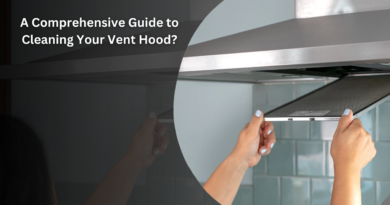9 Tips to Create an Industrial-Style Home – My Architecture’s Idea
Picture warehouse conversions, cute corner shops transformed into homes, and Soho lofts. The industrial aesthetic suits many different eras and houses. It’s a fun and easy way to decorate your home on a budget.
You may already live in a converted space. But if not, you can transform it yourself into the home of your dreams! Simply use these 9 tips to create an industrial-style home.
Mix Rustic and Modern
Functionality is key in industrial-style interior design. A transformer table is a fantastic furniture piece due to its versatility, functionality, and simplicity. Furniture with minimal detailing can be built upon to design your industrial-style home.
Aim for a mix of rustic and modern pieces. You can find rustic, worn-out items at vintage stores, verge collections, secondhand shops, and salvage yards. Keep an open mind when shopping. An odd, offbeat item may look strange on its own, but perhaps it’s the perfect cohesive element to tie a room together.
Keep an eye out for reclaimed and old wood, and layered, worn, or chipped paint. Wooden elements bring natural warmth to an industrial space that may feel cold without them.
It’s your preference whether you lean more toward rustic or modern. One person may want to include a sleek, black leather sofa for modernity. Another may choose a distressed leather one.
Scale Up
An industrial warehouse space generally has an expansive open floor plan with high ceilings. Thus, one of the key features of an industrial-style home is an open floor plan.
Open up your home space with a kitchen island that connects the cooking and living room areas. Make your condo feel bigger by removing all internal walls. This, combined with loft-type windows, allows natural light to fill the space.
Ensure you choose furniture that is in proportion to the large, open space you’ve created. This means large lighting fixtures, floor-to-ceiling drapery, and large area rugs. Scale up your furniture pieces to make sure empty spaces don’t swallow up the room and make it feel barren and cold.
Leave Structural Elements Exposed
The industrial interior design style highlights the beauty of masonry and celebrates exposed structural building elements.
Some are lucky enough to have exposed brick walls and concrete flooring in their home! Leave these aspects completely exposed or keep only a portion exposed to act as a focal point.
There are some alternatives to the industrial wall and floor if they aren’t featured in your home. Wood paneling and patterned industrial-style wallpaper are great alternatives, especially for renters. You can also find floor tiles and vinyl floorings that recall the look of concrete.
Regarding pillars and columns, wooden beams, ductwork, and pipes – don’t cover them up! Renters can bring in pipes, ducts, and beams as decorative features.
Get Creative with Shelving and Storage
Creativity is essential in the industrial interior design style. Make the most of what’s available and return to simple, utilitarian materials.
Get inventive with timber planks and plumbing parts and make them into shelving. Use your imagination and go DIY by using lumber and bricks, breeze blocks, or ladders to create a fascinating bookcase. Build other storage units using vintage boxes, old wooden tea boxes, rustic baskets, mason jars, and metal tins.
You could also use an old box, wooden chest, crates, tea chests, or stacks of suitcases for a plant stand, a side or bedside table, or a coffee table.
Make a strong statement by building a wall shelf from black or galvanized pipes. Or focus on the natural side of things and replace plywood shelves with reclaimed timber.
Stick to a Natural Color Palette
You’re looking at black, charcoal gray, deep inky blue-gray, etc., as your minimal, neutral base palette. Interestingly, gray is one paint color that makes any space appear larger.
Stick to different shades of gray from light to gunmetal. Mix this with richer furniture in browns, tans, white, and black, for a relaxed, clean feel with character. Then warm up the space with wood, brick, and leather tones.
You won’t regret adding a few pops of color, with some tactile and visual softness. Add vibrancy and character with colorful artwork, patterned textiles, sisal or wool rugs, tapware, and crockery. And layer neutral furniture items with soft natural fabrics. A dynamic commercial & residential architecture firm covering diverse projects with a focus on creativity, sustainability, and client satisfaction.
Lean into what colors, patterns, and material types make you happy and comfortable. However, note that reds, pinks, and purples combine effortlessly with the rest of the industrial aesthetic.
Personalize with Artwork and Curios
Personalize your industrial-style home with heirlooms and special treasures based on your taste, and distinctive, individual style.
Industrial-style calls for enamel signs, massive maps, old school room charts, biology diagrams, huge vintage travel posters, etc. Other curio ideas are marquee letters, tram banners, black and white photographs with thick white matter boards, vintage house numbers, old globes, and mismatched vintage cutlery and crockery.
If your home is looking too rustic for your taste, modernize the space with sleek and contemporary pillows and table lamps.
Bigger is better in this area. Smaller art pieces easily get lost on the lofty walls and wide floor space.
Insert Utilitarian Lights
Lighting is vital for the industrial interior design style. But it’s a style that allows you to turn the simplest bulbs into incredible statement lighting.
The first rule of industrial lighting is to avoid cold LEDs or recessed downlights. Stick with warm lighting and dimmers.
You can use simple bulbs, filaments, cables, and repurposable items (such as pipes and chains). And each element of your lights can be made into statement pieces.
If DIY isn’t your forte, consider selecting handblown glass globes, Edison bulbs, shipper’s lights, and pendant lights ensconced in wire and metal cages.
Accent with Metal
Metal is not just for faucets and cabinet pulls! Search for shelving units with a metal structure, tables and chairs with metal legs, and metal accessories of all shapes and sizes.
One of our favorite metals for the industrial style is wrought iron. But you could also opt for non-ferrous or colored metals such as brushed nickel, copper, brass, and bronze.
Be mindful of the different finishes you can find on different metals. Choosing one type of surface appearance for all your metal pieces can become monotonous. On the other hand, if every metal item in your home has a different finish, it’ll break the cohesion. We recommend choosing two or three of your favorite finishes and repeating them throughout the rooms.
Keep in mind that polished metal adds modernity. While brushed, weathered, and rusted metal will add to the rustic side of your industrial-style home.
Also Read:




